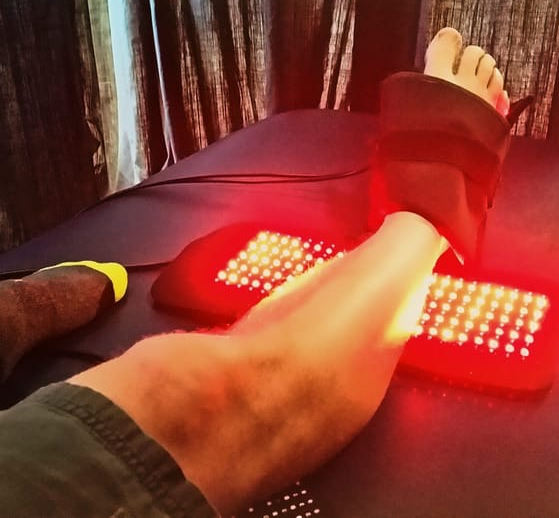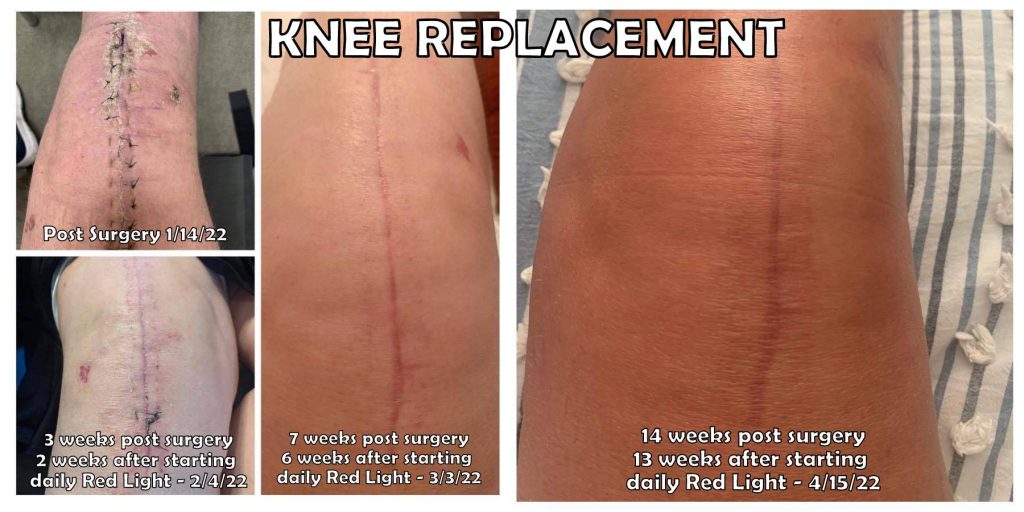
Red light therapy for Post Op Care
Red light therapy has gained popularity as a non-invasive and drug-free treatment option for various medical conditions. One area where it has shown promising results is in post-operative care. In this article, we will explore the benefits of red light therapy in aiding post-operative recovery, the science behind this therapy, its administration procedure, and potential side effects.
The Role of Red Light Therapy in Post-Operative Care
Post-operative care plays a crucial role in ensuring a smooth recovery after surgery. One emerging technique that has gained attention in recent years is red light therapy. This non-invasive treatment has shown promising results in reducing inflammation, accelerating wound healing, and minimizing scar formation. Let's explore these benefits in more detail:
Reducing Inflammation and Pain
After surgery, inflammation and pain are common challenges that patients face. Fortunately, red light therapy has been proven to be an effective tool in managing these discomforts. By emitting low-level red light, this therapy can suppress pro-inflammatory molecules, such as cytokines and chemokines, while simultaneously promoting the release of anti-inflammatory cytokines. This dual action helps to alleviate post-operative discomfort and allows patients to recover more comfortably.
Moreover, studies have shown that red light therapy can also stimulate the production of endorphins, which are natural pain-relieving chemicals in the body. By increasing the levels of these feel-good hormones, patients can experience a reduction in pain and a greater sense of well-being during their recovery.

Benefits of Red Light Therapy
- Increased Circulation
- Healthier Nerves
- Improved Sleep
- Restore Cellular Health
- Reduce Pain
- Reduction of Inflammation
- Anti-Aging
- Improved Skin Health
Accelerating Wound Healing
Wound healing is a critical aspect of post-operative care, as it determines how quickly patients can resume their normal activities. Red light therapy has been found to play a significant role in accelerating this process. By emitting specific wavelengths of red light, this therapy stimulates the production of collagen, a protein essential for wound healing. Collagen provides structural support to the wound, helping it to close faster and stronger.
Furthermore, red light therapy promotes angiogenesis, which is the formation of new blood vessels. This is crucial for wound healing, as it improves the supply of oxygen and nutrients to the surgical site. By enhancing blood circulation, red light therapy ensures that the wound receives the necessary resources to heal efficiently. As a result, patients may experience faster healing times and a reduced risk of complications, such as infections.
Minimizing Scar Formation
Scarring is an inevitable consequence of surgery, but its appearance can be minimized with the help of red light therapy. This therapy has been found to promote collagen remodeling, which is the process of replacing old collagen fibers with new ones. By stimulating this remodeling process, red light therapy can improve the overall appearance of scars over time.
In addition, red light therapy helps to regulate the production of excess scar tissue. By preventing the accumulation of scar tissue, patients may experience less noticeable scars and increased self-confidence. This can have a significant impact on their emotional well-being and overall satisfaction with the surgical outcome.
In conclusion, red light therapy is a promising addition to post-operative care. Its ability to reduce inflammation, accelerate wound healing, and minimize scar formation makes it a valuable tool in promoting a successful recovery. As further research continues to explore its potential, red light therapy may become an increasingly common practice in the field of post-operative care.

The Procedure of Red Light Therapy
Red light therapy is a non-invasive treatment that has gained popularity in recent years for its potential health benefits. This therapy involves the use of specific wavelengths of red or near-infrared light to stimulate cellular function and promote healing. The procedure can be administered using various devices, including light-emitting diode (LED) panels and handheld devices.
How is Red Light Therapy Administered?
When undergoing red light therapy, patients may wonder how the treatment is actually administered. The process is quite simple and straightforward. The red or near-infrared light-emitting devices are applied directly to the surgical site or the surrounding area. These devices emit specific wavelengths of light that penetrate the skin and reach the underlying tissues.
The light energy is absorbed by the cells, which then triggers a series of biological responses. This includes the stimulation of mitochondria, the powerhouse of the cells, which leads to increased energy production and enhanced cellular function. Additionally, red light therapy has been shown to promote collagen production, improve blood circulation, and reduce inflammation.
Patients can rest assured that red light therapy is a painless procedure. The light emitted by the devices does not generate any heat, making it a comfortable experience for individuals undergoing treatment.
Duration and Frequency of Treatment
The duration and frequency of red light therapy treatments may vary depending on the specific post-operative condition and the recommendations of the healthcare professional. Typically, each session lasts between 10 and 30 minutes, allowing patients to fit the treatment into their busy schedules.
It is important to note that red light therapy is not a one-time treatment. In order to achieve optimal results, patients may need to undergo multiple sessions over a certain period of time. The frequency of treatments can vary as well, with some individuals receiving therapy several times a week, while others may have sessions less frequently.
Healthcare professionals will assess the progress of each patient and adjust the treatment plan accordingly. They will consider factors such as the severity of the condition, the patient's response to the therapy, and any potential side effects. By closely monitoring the patient's progress, healthcare professionals can ensure that the treatment is effective and safe.
In conclusion, red light therapy is a non-invasive procedure that utilizes specific wavelengths of red or near-infrared light to stimulate cellular function and promote healing. The treatment can be administered using various devices and is applied directly to the surgical site or the surrounding area. The duration and frequency of treatments may vary depending on the patient's condition and the healthcare professional's recommendations. By undergoing multiple sessions over a certain period of time, patients can experience the potential benefits of red light therapy.
Benefits of Red Light Therapy for Post-Op Care
Undergoing surgery can be a stressful and challenging experience. However, with the advancement of technology, there are now innovative methods available to aid in the recovery process. One such method is red light therapy, which has been proven to have numerous benefits for post-operative care.
Improved Recovery Time
By promoting healing, reducing inflammation, and minimizing complications, red light therapy can contribute to a shorter recovery period. This means patients can return to their daily activities faster and resume a normal lifestyle. The therapeutic effects of red light stimulate cellular activity, boosting the body's natural healing mechanisms. This leads to accelerated tissue repair, allowing patients to regain their strength and vitality more quickly.
Furthermore, red light therapy has been shown to enhance blood circulation, which is essential for delivering oxygen and nutrients to the surgical site. Improved blood flow not only aids in the healing process but also helps to flush out toxins and reduce the risk of infection.
Reduced Need for Pain Medication
One of the significant benefits of red light therapy in post-operative care is its potential to reduce the need for pain medication. Surgery often comes with discomfort and pain, which can be managed through the use of opioids and other painkillers. However, these medications can have adverse side effects and may lead to dependency.
Red light therapy provides a natural and non-invasive alternative for pain relief. The therapy stimulates the release of endorphins, which are the body's natural painkillers. By activating these natural pain-relieving mechanisms, red light therapy can help patients avoid or decrease their reliance on opioids and other painkillers. This not only minimizes the risk of addiction but also reduces the potential for side effects such as drowsiness, constipation, and nausea.
Enhanced Quality of Life Post-Surgery
Recovering from surgery can be physically and emotionally challenging. The pain, limited mobility, and visible scars can take a toll on a patient's well-being. Red light therapy not only improves physical healing but also enhances the overall quality of life during the recovery period.
By reducing pain and inflammation, red light therapy allows patients to move more comfortably and regain their mobility faster. This can significantly improve their daily activities and independence, leading to a greater sense of well-being and satisfaction. Additionally, red light therapy has been shown to minimize the appearance of surgical scars, promoting self-confidence and improving body image.
Moreover, the therapeutic effects of red light therapy extend beyond physical healing. The treatment has been found to have mood-enhancing properties, helping patients cope with the emotional stress that often accompanies surgery. By promoting relaxation and reducing anxiety, red light therapy can contribute to a more positive and enjoyable recovery experience.
In conclusion, red light therapy offers a range of benefits for post-operative care. From improving recovery time and reducing the need for pain medication to enhancing the overall quality of life during the recovery period, this innovative therapy provides a holistic approach to healing. As technology continues to advance, red light therapy is becoming an increasingly valuable tool in the field of post-operative care, offering patients a faster, more comfortable, and fulfilling recovery process.



